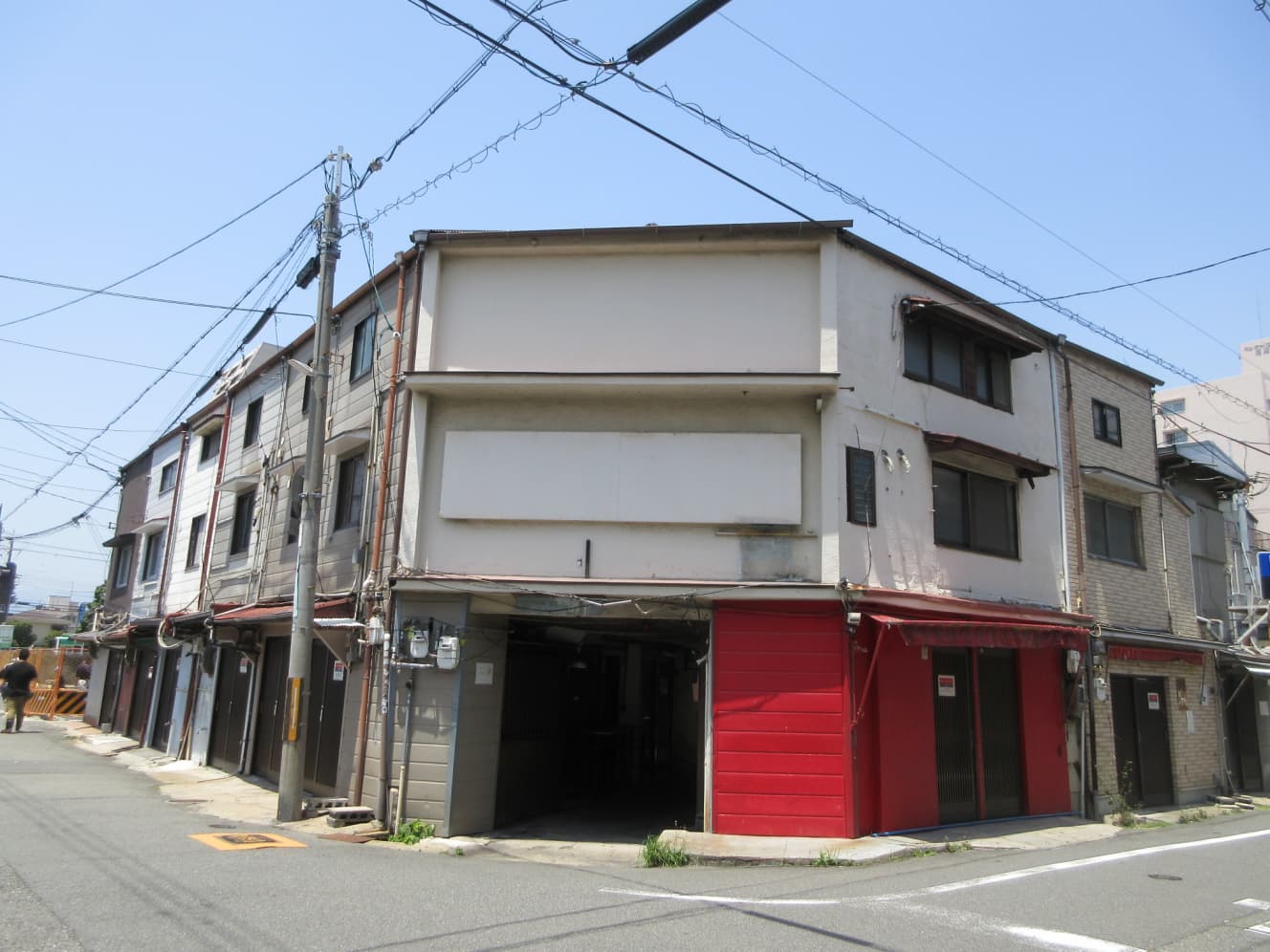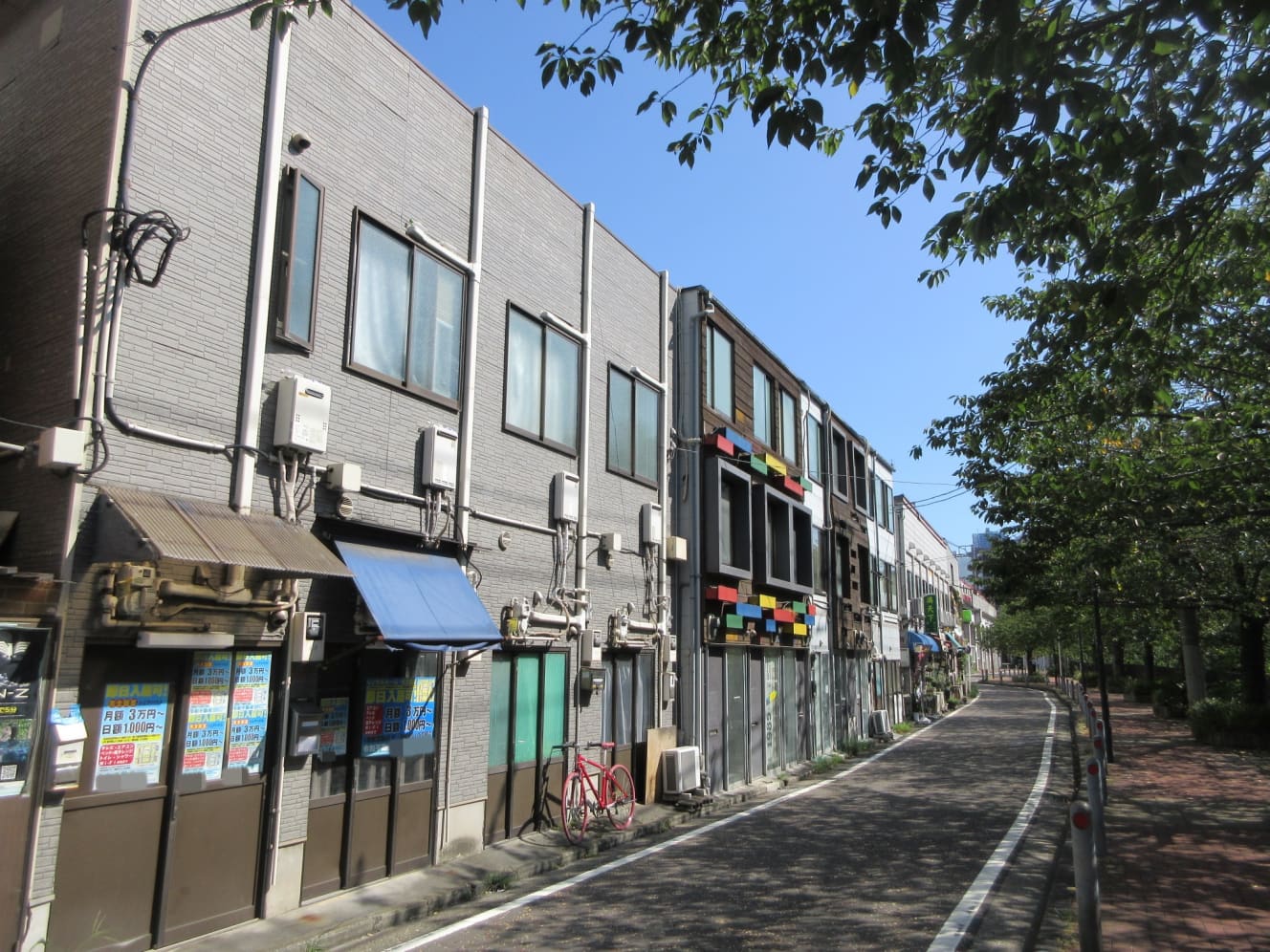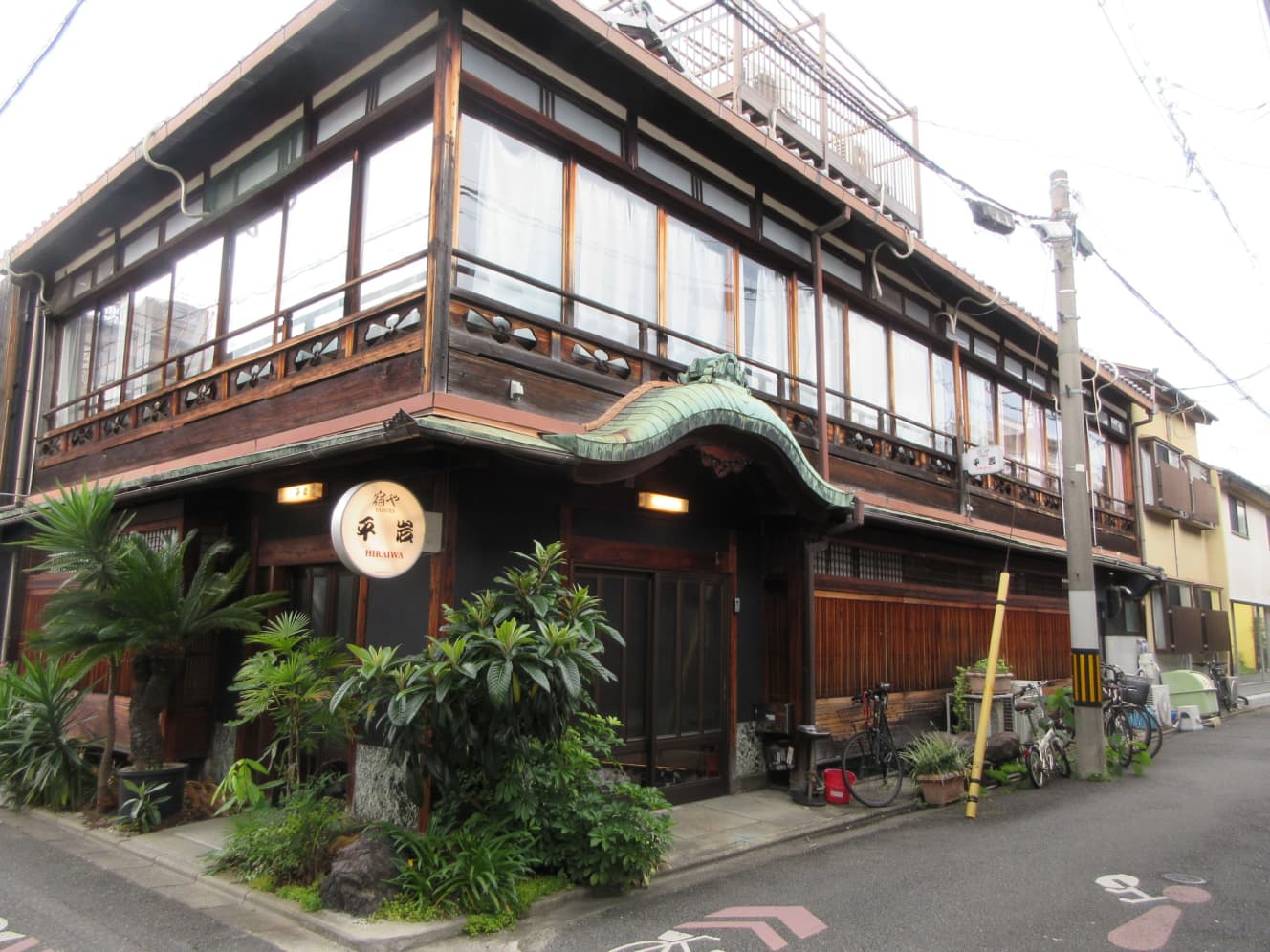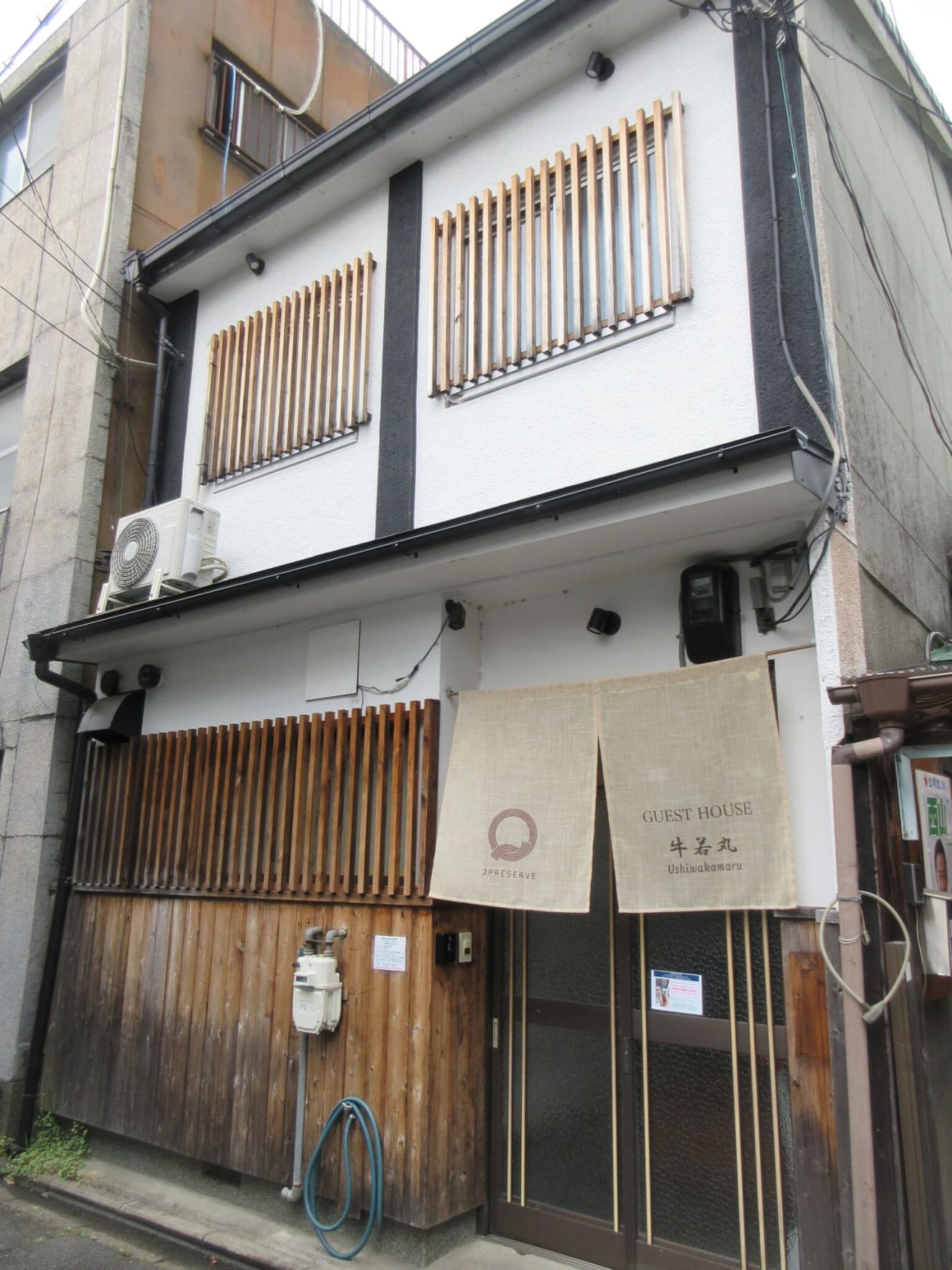The Unusual Aftermath of Japan’s Vanished Short-Time Districts
In Osaka, areas like Tobita Shinchi and the other “Five Major Shinchi” districts continue to operate today, but illegal sex establishments known as chonnoma are constantly at risk of disappearing. Over the past 20 years, several chonnoma districts have vanished, and in this Part 2, adult industry journalist Akira Ikoma explains what became of them. The first example is Kannami Shinchi, which is said to have been completely wiped out through redevelopment after crackdowns.
About half of the buildings still remain Amagasaki’s “Kannami Shinchi”
In Amagasaki City, Hyogo Prefecture, there remained an illegal red-light district called Kannami Shinchi until the winter of 2021, during the COVID-19 pandemic. In a roughly 680㎡ area lined with wooden row houses, about 30 chonnoma establishments had been clustered together. However, on November 1 of that year, a joint warning notice was issued by Amagasaki City and the Amagasaki Minami Police Station, stating: “We have received local complaints that the living environment is deteriorating. Since this is a prohibited area for sex industry operations, you are to cease all business activities immediately.” In response, the shops collectively halted business, closing the curtain on a history of nearly 70 years.
The district’s origins trace back to the postwar period, when street prostitutes began working on corners and gradually shifted to shop-based operations, forming an illegal entertainment area known as an Aosen (unlicensed brothel zone). Even after the full enforcement of the Prostitution Prevention Act in 1958, it persisted. During the Nojigiku Hyogo Kokutai sports festival in 2006, the city and prefectural police carried out a crackdown under the slogan “Clean Up the Entertainment District,” but the chonnoma quarters survived. Police officials lamented a constant game of cat-and-mouse, where shops resumed business almost immediately after individual raids.
The 2021 warning came against a backdrop of three factors: the spread of social media and internet exposure, urban redevelopment plans, and organized crime exclusion efforts. Other illegal entertainment districts within the city had already disappeared, and some locals remarked, “It’s a miracle Kannami Shinchi hadn’t been shut down until now — the biggest mystery of all,” and “It was baffling how such a lawless area was left alone for so long.”
To improve the local environment, the city announced plans to acquire all the land, clear the area, and sell it. Demolition work had already begun on acquired lots, with the post-demolition sites to be repurposed as open spaces for events and other uses.
To check on the current situation, I visited the area in late May. Roughly half of the buildings had already been torn down, while the remainder still stood. When I spoke to a person on-site, they explained, “Some people are still living here, so demolition can’t proceed yet.” Reportedly, negotiations are ongoing between Amagasaki City and the remaining residents. The chonnoma buildings proved far more stubborn than expected.
Over 250 establishments once operated in the dark side of Yokohama. Yokohama’s “Koganecho”
Lastly, let’s look at two examples where, even after chonnoma districts were raided and shut down, the remaining buildings weren’t demolished — instead, they were cleverly repurposed to successfully reshape the area’s image.
One of those was Yokohama’s Koganecho, once counted alongside Osaka’s Tobita Shinchi and Okinawa’s Maehara Entertainment Quarter as one of Japan’s Three Great Chonnoma Districts. It thrived as an illegal Aosen (unlicensed red-light district) after the war, and during Japan’s rapid economic growth, brothels packed tightly under the elevated railway tracks. The area became a symbol of “dark Yokohama”, famously depicted in Akira Kurosawa’s 1963 classic High and Low, which vividly showed the area’s prostitutes and drug addicts.
Originally staffed mostly by Japanese women, by the late 1970s Taiwanese women began arriving, followed in the 1980s and ’90s by women from Thailand and the Philippines. Eventually, Chinese, Korean, South American, and Eastern European women came to dominate the scene. Many of the Japanese women moved across the river to the legal adult-entertainment district of Akebonocho, contributing to this shift.
Despite the changing times, public morals in the area remained abysmal. After the 1995 Great Hanshin Earthquake, as seismic reinforcements pushed businesses out from under the elevated tracks, row-house-style chonnoma shops spread along the railway. At its peak, more than 250 brothels lined the underside of the Keikyu Line’s overpass. With one to three women waiting per shop, working in eight-hour shifts around the clock, it’s estimated that over 1,000 prostitutes operated there — many foreign women, saddled with massive debts in their home countries, selling sex for around 10,000 yen per session.
Because ordinary families lived just a street away, the negative impact on daily life peaked in those years. By the 2000s, the local community’s patience finally broke, and residents’ anger reached its limit.
“Our children are walking to school past brothels,” they protested, prompting both police and local authorities to act. In January 2005, they launched the “Bye-Bye Operation” — a play on the English word for “goodbye” and baibai, the Japanese slang for prostitution.
Since chonnoma were extremely profitable for landlords, earning them several million yen a month, shutting down one shop at a time wasn’t enough, as new ones would quickly pop up. To break this cycle, riot police were stationed in the area 24 hours a day. Armored vehicles surrounded the district, and officers stopped and questioned every visitor. By sealing off the area, they choked off customers, drained the businesses, and forced the brothels out. As a result, illegal prostitution was completely eliminated from Koganecho.
However, leaving the former brothels abandoned would have turned the area into a ghost town. So after the crackdowns, a movement began to revive the neighborhood through art. Thanks to the efforts of many, the district successfully reinvented itself with art at its core. Today, Koganecho is recognized as an “art town,” shedding its dark past.
Today, it’s an Instagram-worthy tourist spot. Kyoto’s “Gojo Rakuen”
In Kyoto City, Kyoto Prefecture, there existed a chonnoma district known as “Gojo Rakuen” until about 15 years ago. It was located roughly a 15-minute walk northeast from Kyoto Station, just south of Gojo Bridge, in a small island-like area sandwiched between the Kamo River and Takase River.
It originated as a pleasure district dating back to the Heian period and flourished especially from the late Edo era through the Meiji and Taisho periods. In the Taisho era, several neighboring red-light districts merged and the area came to be commonly known as “Shichijo Shinchi.” Around 1935, it was the most bustling red-light area in Kyoto, reportedly home to around 1,000 yūjo (courtesans).
After the war, it became a red-line district, and even after the full enforcement of the Prostitution Prevention Act in 1958, prostitution quietly continued under the name “Gojo Rakuen.” The style involved a customer being led into a room where a woman in a kimono would visit.
It operated discreetly for years, but coverage by weekly magazines and online reports about the prostitution practices triggered police crackdowns in October and November 2010. The heads and managers of tea houses and okiya were arrested on suspicion of violating the Prostitution Prevention Act, forcing the entire area to suspend operations. In March 2011, the Gojo Rakuen Tea House Association officially disbanded, ending its long history.
Later, in 2017, when a certain major crime syndicate based in the area was ordered by Kyoto City to vacate its headquarters, redevelopment progressed. Many of the former yūkaku (pleasure houses) and café-style buildings from the Meiji and Taisho eras, with their compartmentalized room layouts, were renovated into cafés, shops, and lodging facilities, transforming the district into a hub for new culture.
Today, the area retains the nostalgic atmosphere of old tea houses and okiya, with retro and rare early modern architecture such as karahafu-style entrances, decorative tile work, and glass windows. It has become a popular Instagrammable sightseeing destination and a nostalgic, character-filled neighborhood beloved by tourists from overseas and young Japanese visitors alike.
Koganecho and Gojo Rakuen are rare examples of chonnoma districts that successfully revitalized themselves while preserving their historic architecture and becoming wholesome, lively areas embraced by the public. They’ve achieved an impressive transformation from deep, illicit red-light districts to popular tourist spots.
Looking back on these cases, one clear pattern emerges: chonnoma districts that were despised by local residents as social nuisances inevitably vanished. This reveals how essential it is for such areas to be accepted by their communities in order to survive. That’s likely why Osaka’s Five Major Shinchi districts have endured even today.
Yet no one knows how much longer those Five Shinchi will remain. As these examples show, legally ambiguous red-light districts are, by nature, fleeting.
Among them, Tobita Shinchi — with its remaining atmosphere of a historical yūkaku — holds particular cultural and historical value, especially as it continues to welcome visitors from around the world. One can only hope it will continue operating responsibly, contributing to the local economy and community, while preserving its unique legacy for as long as possible.




Interview, text, and photographs: Akira Ikoma
